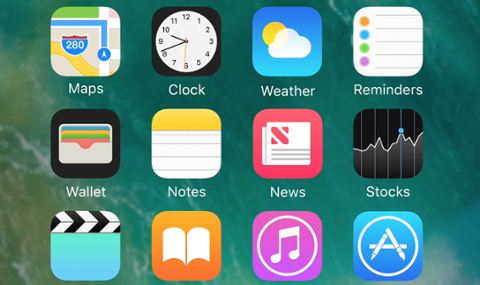 WWDC 2017 Platforms[/caption] At WWDC, Apple did what many expected by updating its various platforms. There’s a lot to unwrap, and a lot of things that will be very new to users and developers alike. Here’s what’s new for iOS, watchOS, macOS and tvOS. With tvOS, Apple's WWDC keynote was light on details. Save for Amazon Prime coming to Apple TV – which will work with the TV app – there just wasn’t much to note. A separate June 6 session, titled “Advances in TVMLKit” (Session 202, 11:20am, Grand Ballroom B if you’re on-site), will discuss right-to-left support for localization and performance optimization techniques, as well as enhancements in the Web Inspector.
WWDC 2017 Platforms[/caption] At WWDC, Apple did what many expected by updating its various platforms. There’s a lot to unwrap, and a lot of things that will be very new to users and developers alike. Here’s what’s new for iOS, watchOS, macOS and tvOS. With tvOS, Apple's WWDC keynote was light on details. Save for Amazon Prime coming to Apple TV – which will work with the TV app – there just wasn’t much to note. A separate June 6 session, titled “Advances in TVMLKit” (Session 202, 11:20am, Grand Ballroom B if you’re on-site), will discuss right-to-left support for localization and performance optimization techniques, as well as enhancements in the Web Inspector.
WWDC 2017: Changes for iOS, macOS, watchOS and tvOS
[caption id="attachment_142013" align="aligncenter" width="4032"]  WWDC 2017 Platforms[/caption] At WWDC, Apple did what many expected by updating its various platforms. There’s a lot to unwrap, and a lot of things that will be very new to users and developers alike. Here’s what’s new for iOS, watchOS, macOS and tvOS. With tvOS, Apple's WWDC keynote was light on details. Save for Amazon Prime coming to Apple TV – which will work with the TV app – there just wasn’t much to note. A separate June 6 session, titled “Advances in TVMLKit” (Session 202, 11:20am, Grand Ballroom B if you’re on-site), will discuss right-to-left support for localization and performance optimization techniques, as well as enhancements in the Web Inspector.
WWDC 2017 Platforms[/caption] At WWDC, Apple did what many expected by updating its various platforms. There’s a lot to unwrap, and a lot of things that will be very new to users and developers alike. Here’s what’s new for iOS, watchOS, macOS and tvOS. With tvOS, Apple's WWDC keynote was light on details. Save for Amazon Prime coming to Apple TV – which will work with the TV app – there just wasn’t much to note. A separate June 6 session, titled “Advances in TVMLKit” (Session 202, 11:20am, Grand Ballroom B if you’re on-site), will discuss right-to-left support for localization and performance optimization techniques, as well as enhancements in the Web Inspector.
 WWDC 2017 Platforms[/caption] At WWDC, Apple did what many expected by updating its various platforms. There’s a lot to unwrap, and a lot of things that will be very new to users and developers alike. Here’s what’s new for iOS, watchOS, macOS and tvOS. With tvOS, Apple's WWDC keynote was light on details. Save for Amazon Prime coming to Apple TV – which will work with the TV app – there just wasn’t much to note. A separate June 6 session, titled “Advances in TVMLKit” (Session 202, 11:20am, Grand Ballroom B if you’re on-site), will discuss right-to-left support for localization and performance optimization techniques, as well as enhancements in the Web Inspector.
WWDC 2017 Platforms[/caption] At WWDC, Apple did what many expected by updating its various platforms. There’s a lot to unwrap, and a lot of things that will be very new to users and developers alike. Here’s what’s new for iOS, watchOS, macOS and tvOS. With tvOS, Apple's WWDC keynote was light on details. Save for Amazon Prime coming to Apple TV – which will work with the TV app – there just wasn’t much to note. A separate June 6 session, titled “Advances in TVMLKit” (Session 202, 11:20am, Grand Ballroom B if you’re on-site), will discuss right-to-left support for localization and performance optimization techniques, as well as enhancements in the Web Inspector.


